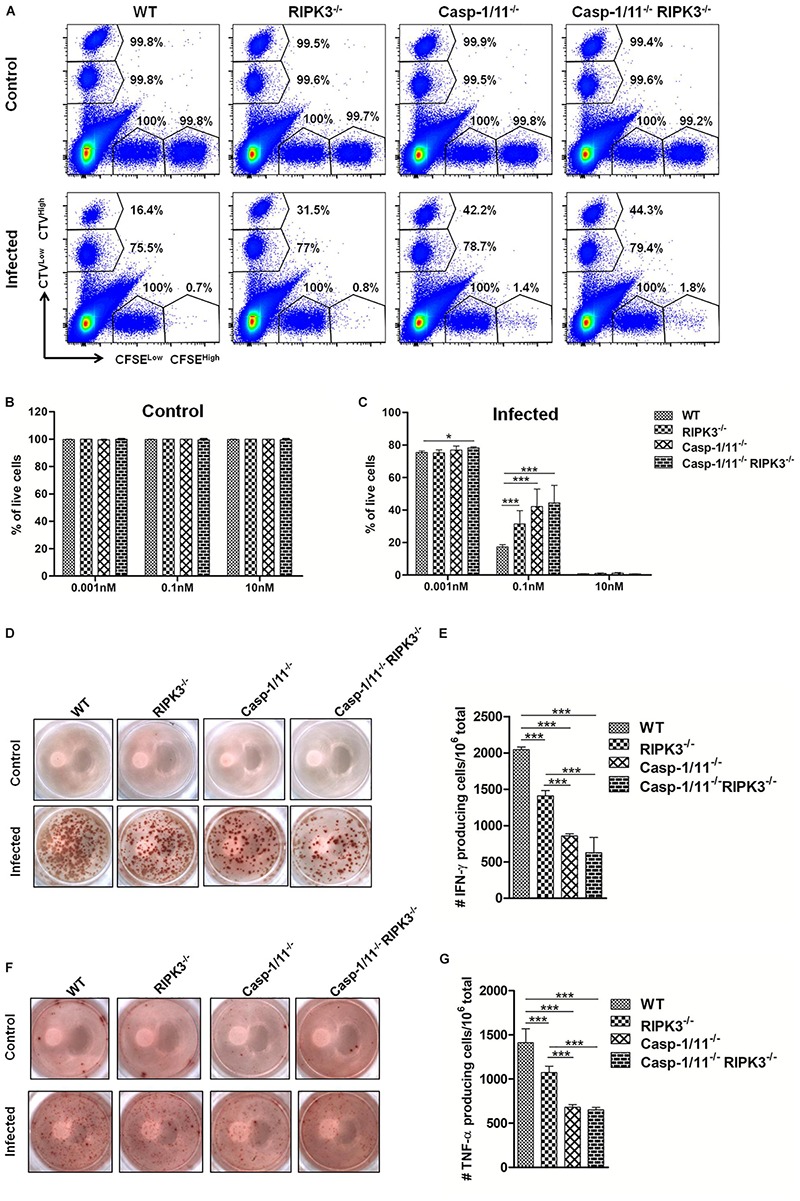FIGURE 4.

RIPK3 and/or Casp-1/11 deficiencies negatively affect in vivo antigen-specific CTL activity and cytokine production in response to LM-OVA. (A) In vivo elimination of target cells pulsed with high (10 nM) (CFSEHigh), intermediate (0.1 nM) (CTVHigh), and low (0.001 nM) (CTVLow) concentration of OVA257–264 peptide at 7 days post-infection with LM-OVA. Percentage of CFSEHigh, CFSELow (non-target cells), CTVHigh, and CTVLow shows the frequency of remaining cells after CTL-mediated target cell elimination. Percentage of live target cells in (B) non-infected and (C) infected mice. (D–G) ELISPOT assay determined the frequency of OVA257–264 peptide-specific IFN-γ- or TNF-α-producing CD8+ T cells. (A) Flow cytometry density plots represent a single mouse from each experimental group. Numbers represent mean percentages of five mice/group. (D,F) ELISPOT images from a single mice/group are representative of five animals/group. (B,C,E,G) Bar graphs depict means and standard deviation of five individual mice per group. Experiments were repeated at least three times with similar results. Statistical analysis was performed by using two-way ANOVA followed by Bonferroni post-tests. *p < 0.05, ***p < 0.001.
